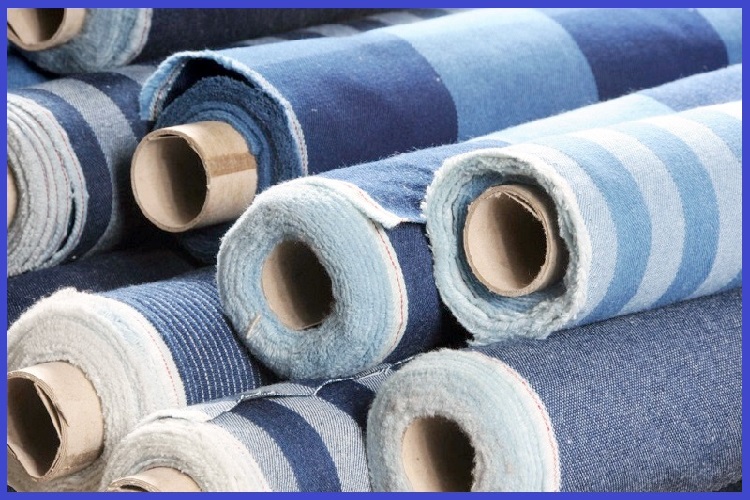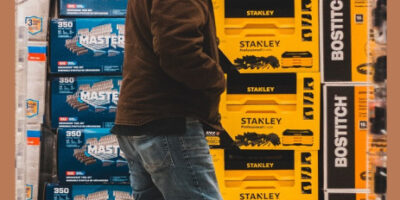Shade variation in garments is caused mainly due to fabric problems. Shade variation in a garment occurs when different garment components have different depths of colors (shade) or mismatch of shades in garment parts of the same garment. Shade variation in garment comes due to shade variation in the fabric in an order. Shade problem is a common problem in denim wash. Denim manufacturer has to face after-wash shading problem issue frequently. Unexpected shading problems may arise after denim garments wash. Because it is a mandatory problem in this arena and it can’t be minimized by using the best effort. Many good denim experts have experimented with it and given their opinion. But even after that, Sade’s problem was not completely solved. And even it may not solve in the coming days. It’s running and inevitable problem for denim manufacturers.
Shade variation is one of the common problems found in garments that are made of dyed or printed fabrics. A garment with shade variation is considered a faulty garment. Suppose there is an order for 50,000 pieces of denim long pants. Then fabric requirement will be about 50,000×1.5= 75,000 yards of fabric. Generally, denim fabrics come in rolls of 100 to 120 yards. So, our roll will be 625 to 650. Assume 650 fabric rolls are now in your hand. Now after making 650 rolls of blankets, it is found that there are ten-twelve seeds. Bayer knew very well that there were 10-12 shades but he would never approve of so many shades. Make sure to approve three or four shades. Now the question remains, what to do with the rest of the shades?
Shade is the depth of color or hue. It is a common word in dyeing, printing, and finishing units of a textile mill. Shade variation control is the most important thing in the dyeing and printing stage in the textile industry. Shade variation control in garments form is a big challenging task, all the variations need to find out in fabric inspection stage. Garments maker needs to complete the bulk fabric shade band submission. No bulk production can begin until the merchandiser has signed off the Color Continuity. Anyway after sewing when the garment goes to the washing plant, the washing plant will try to keep the shade within the 3-4 key shade approval according to buyer guideline. But what about the remaining shades? To minimize shade variation within a garment and from garment to garment when compared to the approved buyer or manufacturer color standard. Now we are going to narrate which techniques garments factories usually use to erase maximum shade bands.
1. Label Shade:-
Since all the shades have been found in the blanket after quality people examination, it is a good practice to categorize the garments into groups A, B, C, D, etc. according to the buyer-approved shades of the blanket, and then wash them according to the shade level. Thus you can find sort out washing garments from the washing plant and no need to re-shed again. It saves manpower, money, and time as well as keeps factory goodwill.
But swing factories are not always willing to apply these shade band methods accurately. They are frequently negligence to make proper shade bands. But this is the most suitable system to erase hassle. In this way, the washing plant can quickly wash the garments separately according to the shade level, i.e. ABCD only.
2. Eye Shade:-
In this process, washing plant is going to separate all the garments visually according to the fabric shade band at the washing plant and washed by weight. It is an old trend and an ongoing process. If the garment is sent from the sewing floor without shade level to wash, then it will be so tough to separate. At that time there is no option other than Eye Shade.
But it must be remembered that no shade goes beyond buyer approval. Factory people should give emphasize buyer-approved shade bands to overcome this odd situation. Suppose, Bayer approved ABC three shades. A shade is slightly dark, B shade is medium and C shade is slightly lighter. What should we do in this situation? There is no option to violate buyer requirements.
In such a situation we have to move ahead with B shade. So that the Bulk production is somewhat Light-Deep but it must be between A and C. If we wash the material with A or C shade then it will be seen at the end of the wash, our material has become 50% Dark or 50% Light. In such a situation, if the buyer does not comply, there will be no option but to rewash fifty percent of the garments. But if you ahead with B shade and wash it, even if the bulk material is slightly deep light, at least the approvals will be in between from the buyer end.
Shade Control Method of Washing Plant:-
Washing plant usually tries to control the garment’s shading problem through several stages and processes. For example:-
1. 1st Wash Stage:
Generally, if the garments are unwashed (Dry Process), after the Dry Process, the garments will be separated according to the shade of the fabric. Once garments are separated according to the approved shade band then those garments will be washed separately in separate machines. Even after 1st wash, there is some shade variation may found. In this situation, should collect problematic garments to do 2nd wash by doing 2nd Dry Process with PP. In the 1st Wash stage, de-sizing time is increased for shedding control, enzyme time and quantity are decreased and if bleach is present, bleaching time and quantity are tried to control shedding.
2. 2nd Wash Stage
Garments need to separate again according to the shade band before going to start the second wash, and 2nd wash is done based on that shade. In most cases, this is the final wash. At this stage, the body is cleaned by neutralization, but if found Tint there, then tinting and softener are done simultaneously to accomplish the Final wash.
After physical checking, if some bleaching is required at the stage of second wash, then it is done. Factory people always try to control shade variation by tinting and softening properly.
Moreover, we should keep in mind that buyer never like mixed cartoons. All buyers want 1 carton 1 shade. To erase this problem garment Finishing Team need to be more careful and try to keep one shade material in one cartoon. That is why it is always logical to wash according to the buyer-approved shade band.
Who gives Shade Approval?
Various types of fabric defects may be created during the weaving of fabrics or may be created during dyeing, and finishing after weaving. In the context of the garment industry, there are still different rules in each factory or buying house. In some garments, merchandisers give wash approval, in some places wash technicians give wash approval. But in some factories QC manager or GM gives wash approval. Whoever factory concerned person who gives wash approval needs to maintain some basic requirements. They should have vast experience in washing before decision-making. For example,
A. Good understanding of the nature of fabric.
B. Type of garments that are ladies or gents or kids.
C. In which season will it be used?
D. In which country will it be used?
E. Should give priority upon lab tests report before garments wash.
It is important to have a clear understanding of garment wash. Those who will be decision-makers should have long experience in washing tracks.
Consolation:
Shade control policy is very important to ensure one shade in one Carton, especially for denim and Non-denim. It does also determine shade variation within one destination or PO. We should be keeping in mind that “fashion wear needs to be seen in the way they are used”. Similarly, human dresses should be viewed from the point of view of wearing. Their decision makes the wearer more fashionable, comfortable, nice fitting, good looking etc. Before giving washing garments approval someone has to be kept in mind for which purpose dresses will be used. Some are overly concerned with the shade of garments. If you don’t want to give a little 19/20 tolerance, then there is no option but to rewash the material. And rewash does not give very good results. Thus we should be more careful and cooperate to erase washing hassles.
One thing we should keep in mind during product purchasing customers first watch the design, then the fitting, then the out looking as well as hand feeling of the wash or the dry process. Then he decides whether he will buy blue jeans or gray or black or something else! Then shade variations become visible. Above all, washing plants should emphasize lab test reports to overcome unwanted problems. Because no garment will be shipped if the lab test becomes fails. If the garment found tearing problem by re-washing, it is better not to rewash the garment unless there is a major shade problem arises with the garment. This is why the Lab Tests must be OK first. So Lab Test should be given highest priority. If you follow lab test report properly and discuss it with senior people before washing then you may solve washing shade problems quickly.
You may like the following topic: Home wash process of jeans pants




